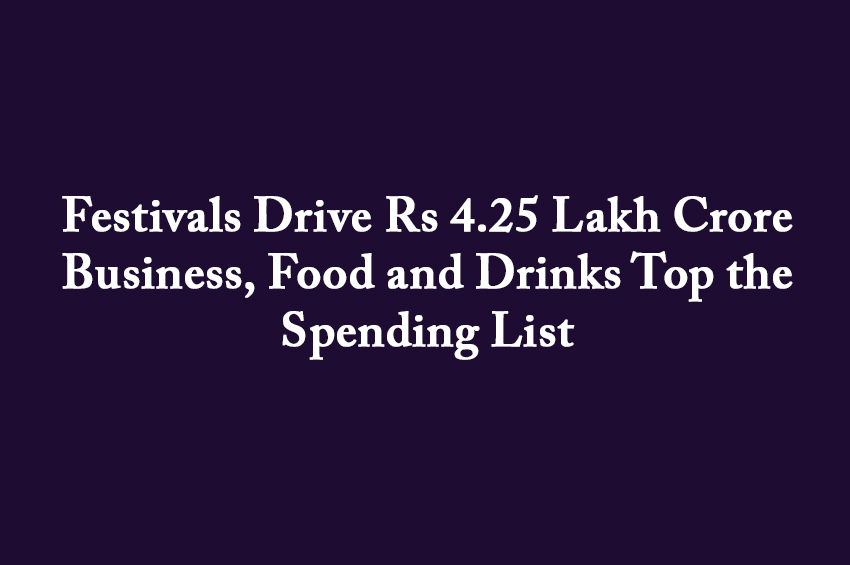Winning Bizness Desk
Mumbai: The festive season is not only a time for celebration but also a crucial period for India’s economy. Festivals like Diwali, Rakshabandhan, and others stimulate a massive wave of consumer spending, with lakhs of crores flowing into markets across the country. This year, the Confederation of All India Traders (CAT) estimates that the festive season, from Rakshabandhan to Diwali, will generate business worth a staggering Rs 4.25 lakh crore. While many people associate festivals with purchases like new cars, furniture, and home appliances, these aren’t the biggest expenditure categories. According to CAT, the largest share of spending during this festive season will be on food and drinks, surpassing all other categories.
Food and Groceries Dominate Festive Spending
Praveen Khandelwal, General Secretary of CAT, revealed that an estimated 13% of the total Rs 4.25 lakh crore spent during this season will go towards food and grocery items, making it the top spending category. This translates to a substantial Rs 55,250 crore being spent on items such as groceries, snacks, and beverages during the festival season. Clothing comes in second, accounting for 12% of the overall expenditure. Jewellery follows with 9%, while dry fruits, sweets, and namkeen contribute to 4% of the spending. Other notable spending categories include electronics and mobile phones (8%), cosmetics (6%), and home decor (3%).
Breakdown of Festive Spending
Here’s a detailed breakdown of how people are expected to spend during the 2023 festive season:.
Food and grocery items: 13%
Clothing: 12%
Jewellery: 9%
Dry fruits, sweets, and namkeen: 4%
Electronics and mobile phones: 8%
Cosmetics: 6%
Home decor: 3%
Gift items: 8%
Utensils and kitchen equipment: 3%
Confectionery and bakery: 2%
Furnishing and furniture: 4%
Puja materials and worship items: 3%
Automobiles, hardware, electricals, and toys: 20%
India’s Markets to Thrive, Minimal Impact of Chinese Goods
The Diwali season alone is expected to generate Rs 4.25 lakh crore in business across 70 major cities in India, compared to last year’s Rs 3.5 lakh crore. In Delhi, the capital city, businesses are projected to exceed Rs 75,000 crore. The CAT report also highlighted the ongoing boycott of Chinese goods, which has been gaining momentum over the past few years. Khandelwal noted that the presence of Chinese products in Indian markets has decreased, and this trend will continue during the current festive season. This move aligns with a broader sentiment of promoting locally made products, which is benefiting Indian manufacturers and retailers.
Small Shopkeepers to See Significant Gains
The festive season is a boon not only for large businesses but also for small shopkeepers across India. Khandelwal explained that items such as gift products, sweets, dry fruits, garments, jewellery, utensils, furniture, beauty products, and home decor will witness high demand, providing a significant boost to small retailers. With the wide variety of goods in demand, ranging from electronics to flowers, the festival period is set to be one of the most profitable times of the year for businesses across the spectrum. Small shopkeepers, in particular, stand to benefit greatly from this surge in consumer activity, reinforcing their important role in the country’s economic landscape. As India enters its most vibrant festive season, the economy will undoubtedly feel the impact of the Rs 4.25 lakh crore surge in business, led by an insatiable demand for food, drinks, and other essentials.


